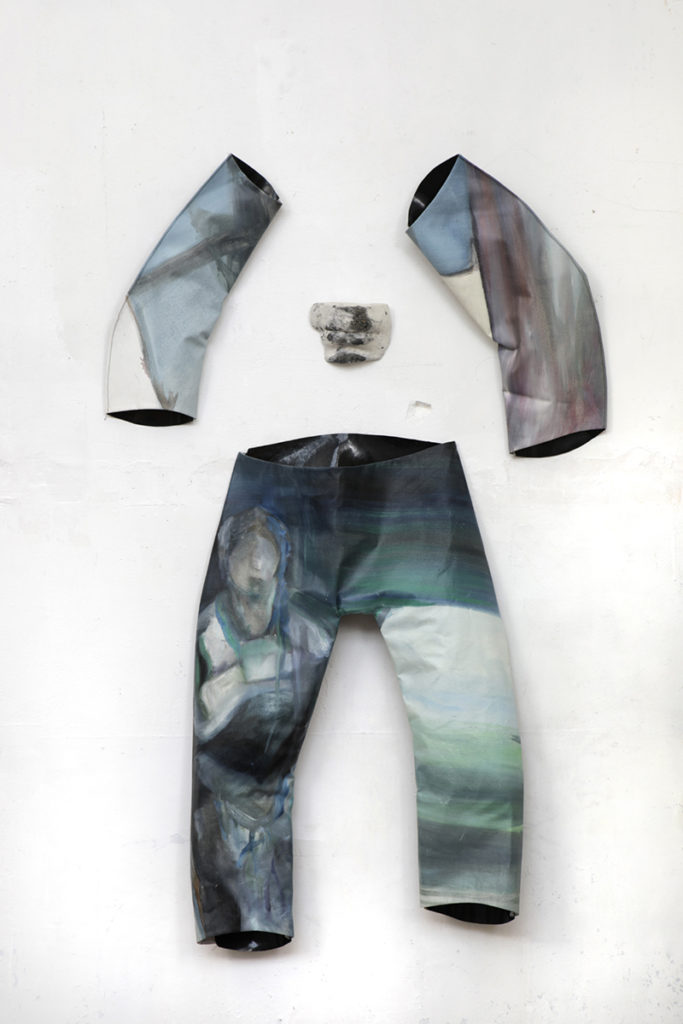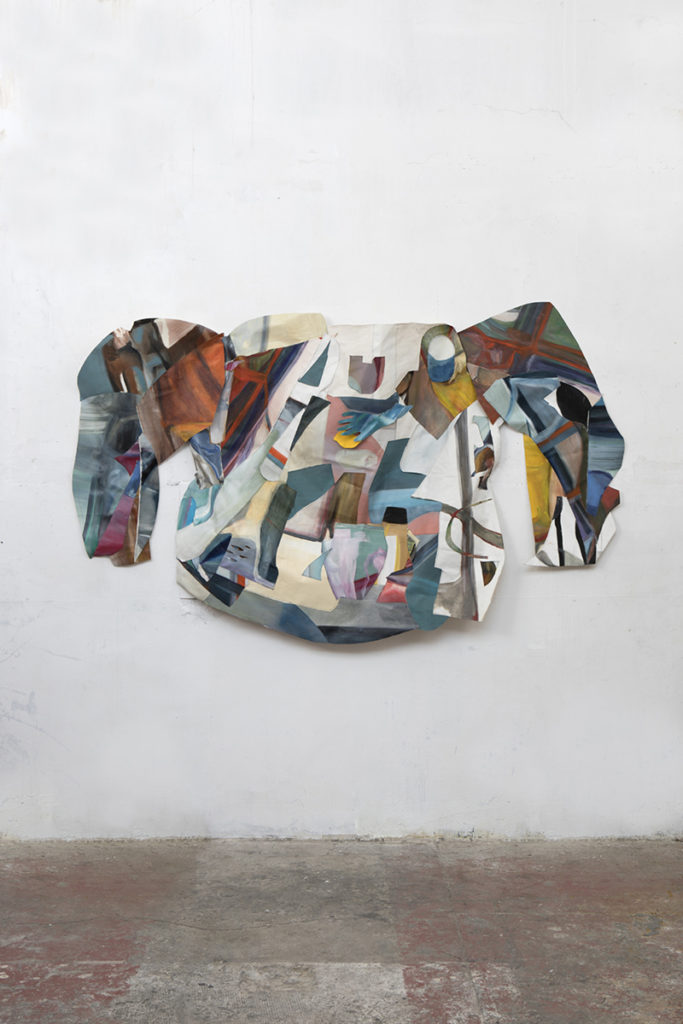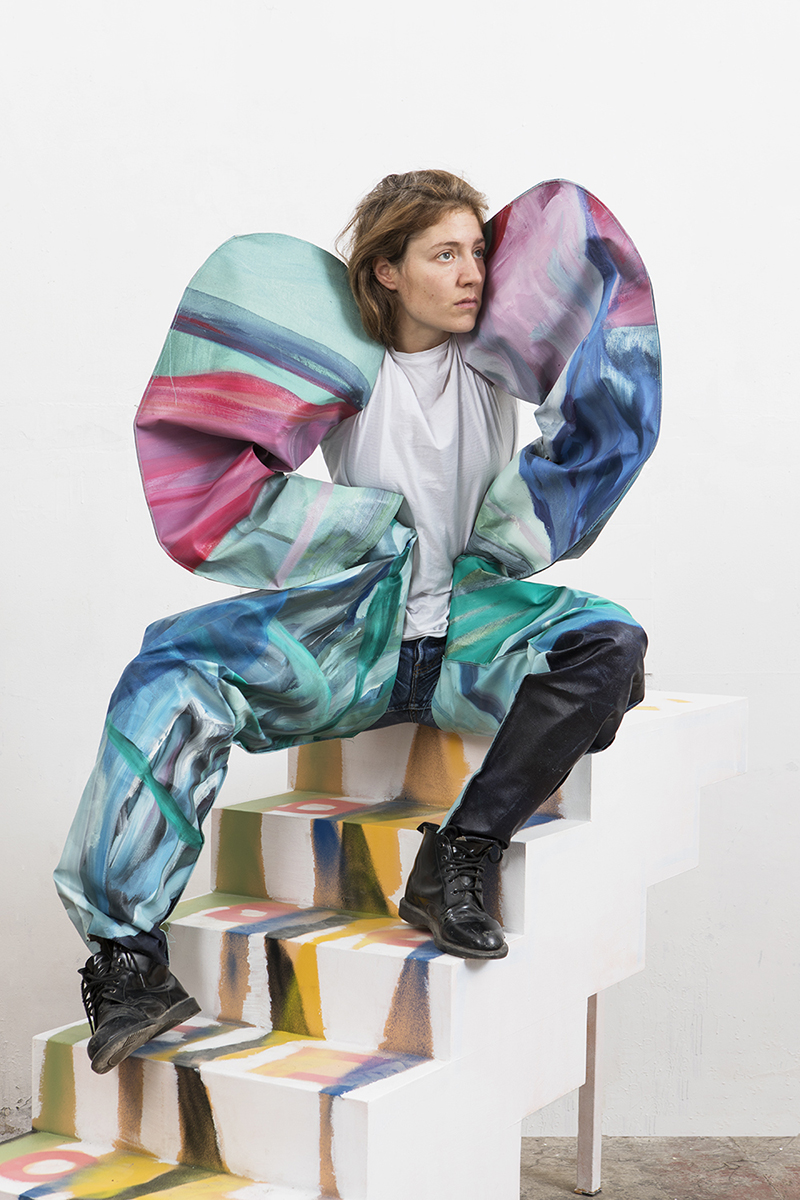Parisian contemporary artist Mathilde Denize talks to Sonalee Tomar about finding inspiration in everything around her and the process of creating using these influences.

We must do something that looks like us, in our ideas, and push these ideas to perfectibility, though there will always be loopholes. But nothing is acquired and nothing is finished in art. That’s why I keep working every day.

Drawing is like making an expressive gesture with the advantage of permanence.
Henri Matisse (1869 – 1954)
Take us to the beginning of your story. How did your tryst with art begin? What were your motivations for moving from sculpture to painting and installations?
Initially I had not planned “to be a painter” or “to be an artiste,” I wanted to move towards the history of cinema. I took some classes at cinema colleges, but I spent more time earning money as a waitress. I drew a little, I filled up notebooks. One night, a friend suggested I try the Fine Art School of Paris with her. Without really thinking, I said, “Yes, why not? Let’s see!”
And it worked. I discovered a whole world that I did not know at all. It was only sometime after that I began to assume the role of an artist. I took up a studio and worked in the direction. As Matisse wrote, “the artistic gesture must be natural or will not be”. I always try to work being mindful of this sentence, to focus on emulating natural gestures, with canvas or sculpture.

What inspires you? Take us through your process and frameworks.
Many things inspire me. I look at a lot of things – plastic, artistic things, cinema, theatre, dance. My practices evolve according to my encounters. For example, a friend or a word can change a sculpture or a painting.
It’s like harvest work. I find things. I go to the flea market often and get some strange pieces, an object or image. These different pieces stay in my studio, often for as long as a year. I display a lot of this material in my studio to create a world that’s conducive to work. It’s therefore a work of harvesting memories, archives of my moments and tastes. All these influences materialize in one of my works.
For a few years now, I’ve been passionate about “The Color of Pomegranates” a movie by a Georgian director, Sergei Parajanov. A few years ago, I went to Georgia and I found a real familiarity in this country, in the Balkan’s culture. Some things looked a lot like my practice, close to the way I work and the imagination that I have.
How did your audience react to your first show?
It was pleasant, really easy. We had this exercise at school every year, and then for the graduation so it’s wasn’t a new experience for me.

What is the primary role of an artist in society?
Artists can have a huge impact on society, depending on the scope of their practice. They can direct this impact in many ways too, by working every day in a space that is not profitable, economical. This is already an artists position, a stand taken by him/her/them. Society needs artists to contradict, debate and question values. But I don’t believe that visual artists, like painters and sculptors are the only ones. Artists are not the only ‘creators’, but each person who questions the status quo, each person who questions known values, who makes side steps are also important.

What are you looking for in other artists’ work? Who are your maestros?
I always focus on the details, when I see something in a gallery, or performance. Even if the work of the artist does not touch me in general, I can still find my attention caught by some details and data. I often look for poetry and contrast. Recently when I worked on Haute Peinture Performance, I watched a lot of Oskar Schlemmer Ballet and the composition of filming in Parajanovs “The Color of Pomegranates.”
Tell us about your own personal evolution and your ongoing commitment to the arts.
It’s a daily commitment, without break, which also applies to the behavior with others in society. Be yourself and be attentive of the world.
How do you deal with the uncertainty of creating something completely new?
For me it’s about creating something that has not happened yet. Ones art is never finished but an artist keeps working day after day. He/she/they keep on pushing that one idea towards perfection.
If he/she/they ask themselves, “Do I have to do something new”, then they would be doomed! Its a terrifying thought.

How do you strike a balance?
For me, it’s important to work every day to keep a thread between social life and commercial life. My work is how I strike a balance.
How does your interaction with a gallery, curator or client evolve from the (brief) initial interface, to the working-involvement-relationship?
For me there must be a factor of enrichment above all. If my practice is not enriched by experience, and the work doesn’t happen organically, then it is better not to do anything at all.

What is the one thing you wish people asked you about but never do?
If I want to do a movie, or a play.
What is one imperative piece of advice you would give someone who is starting out?
Do whatever you want to do. And make sure to observe everything around you.

What are you working on now? What’s coming next season?
Now I’m in Residence in Istanbul for two months. Piston Residency directed by Fiona Vilmer. I always wanted to come back here. I’m with a friend, July Ancel, a painter too. We’ll do an exhibition of the result at the end of December.
Then in Paris I will work with Georges Pompidou’s museum for a workshop with teenagers.
Before you go – you might like to browse our Artist Interviews. Interviews of artists and outliers on how to be an artist. Contemporary artists on the source of their creative inspiration.












Add Comment